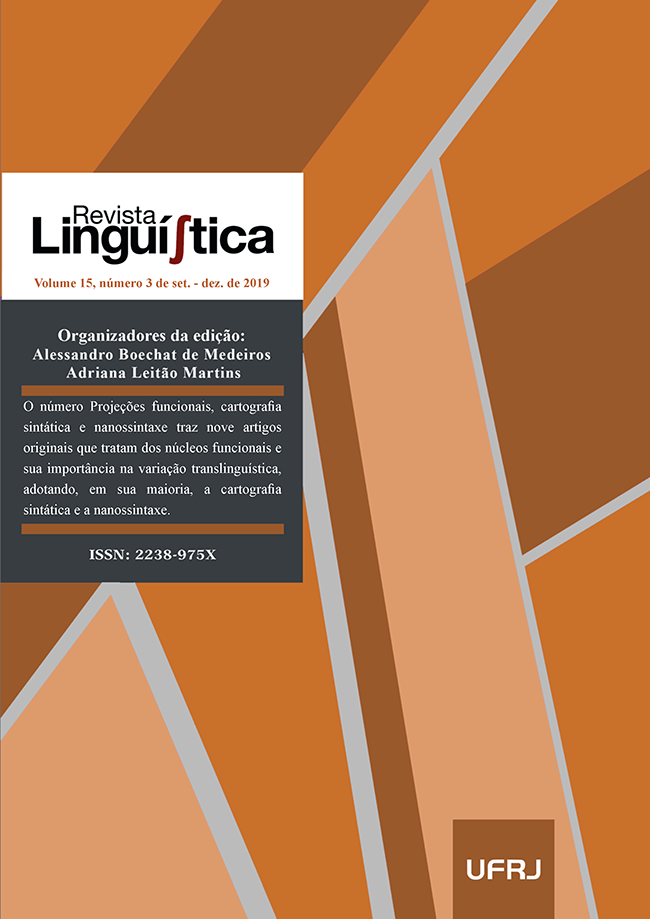Cartography and Microparametric variation: Criterial V2 in Swiss Romansh varieties
DOI:
https://doi.org/10.31513/linguistica.2019.v15n3a27546Keywords:
Cartography, Microparameters, Verb Second, Romansh, Criteria.Abstract
In this article, I shall provide evidence for a theory of microparametric variation among Swiss Romansh varieties adopting a cartographic notion of parameter in terms of syntactic operations triggered by morphosyntactic features in functional projections. I shall discuss evidence showing how such a notion of parameter is extremely powerful in describing linguistic variability at a microlevel of the syntactic architectures. Adopting the guidelines of a Criterial V2, in which the inflected verb creates a Spec-Head configuration with the highest activated criterial head in the syntactic architecture, I shall observe microparametric variation within Swiss Romansh and with respect to other V2 languages, such as German. The language variability only relies on the interactions of basic factors, such as the presence of a functional projection and the syntactic operations triggered by the functional element. In the specific, it is possible to observe German and SR varieties vary in the activation of syntactic instructions in discourse related functional projections such as SubjP, ModP and ForceP. The role of morphosyntactic features thus describes in microparametric terms the richness of configurations predicted by cartographic guidelines and provide fine-grained typologies of set of languages.
---
Original in English.
---
DOI: http://dx.doi.org/10.31513/linguistica.2019.v15n3a27546
Downloads
Published
Issue
Section
License
Authors who publish in the Revista Linguí∫tica agree with the following terms:
The authors maintain their rights, ceding to the journal the right to first publication of the article, simultaneously submitted to a Creative Commons license permitting the sharing with third-parties of published content as long as it mentions the author and its first publication in the Revista Linguí∫tica.
Authors may enter into additional agreements for the non-exclusive distribution of their published work (for example, posting in online institutional or non-profit repositories, or book chapters) so long as they acknowledge its initial publication in the Revista Linguí∫tica.

The journal Revista Linguí∫tica is published by the Post-Graduate program in Linguistics of UFRJ and employs a Creative Commons - Attribution-NonCommercial 4.0 International (CC-BY-NC).









